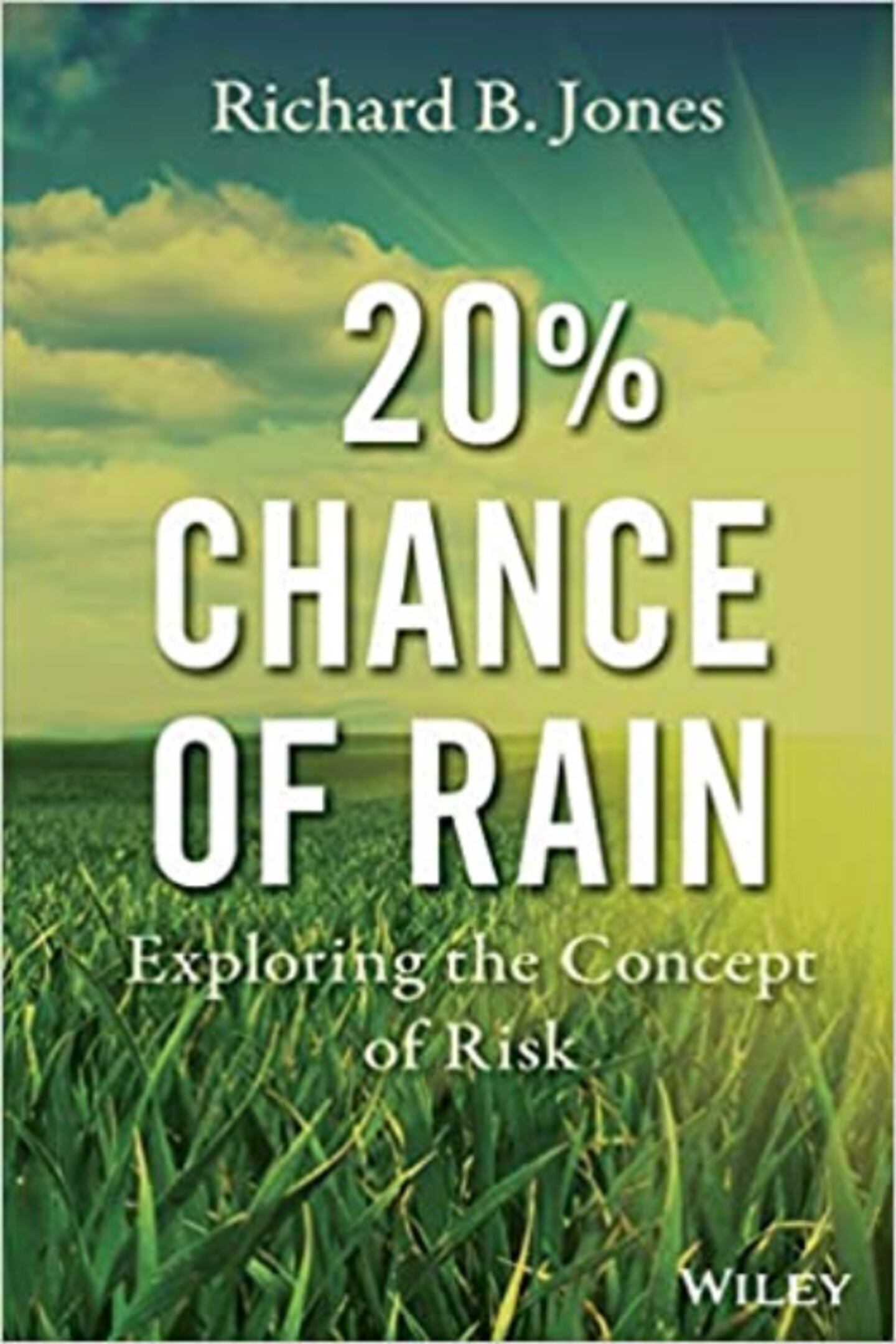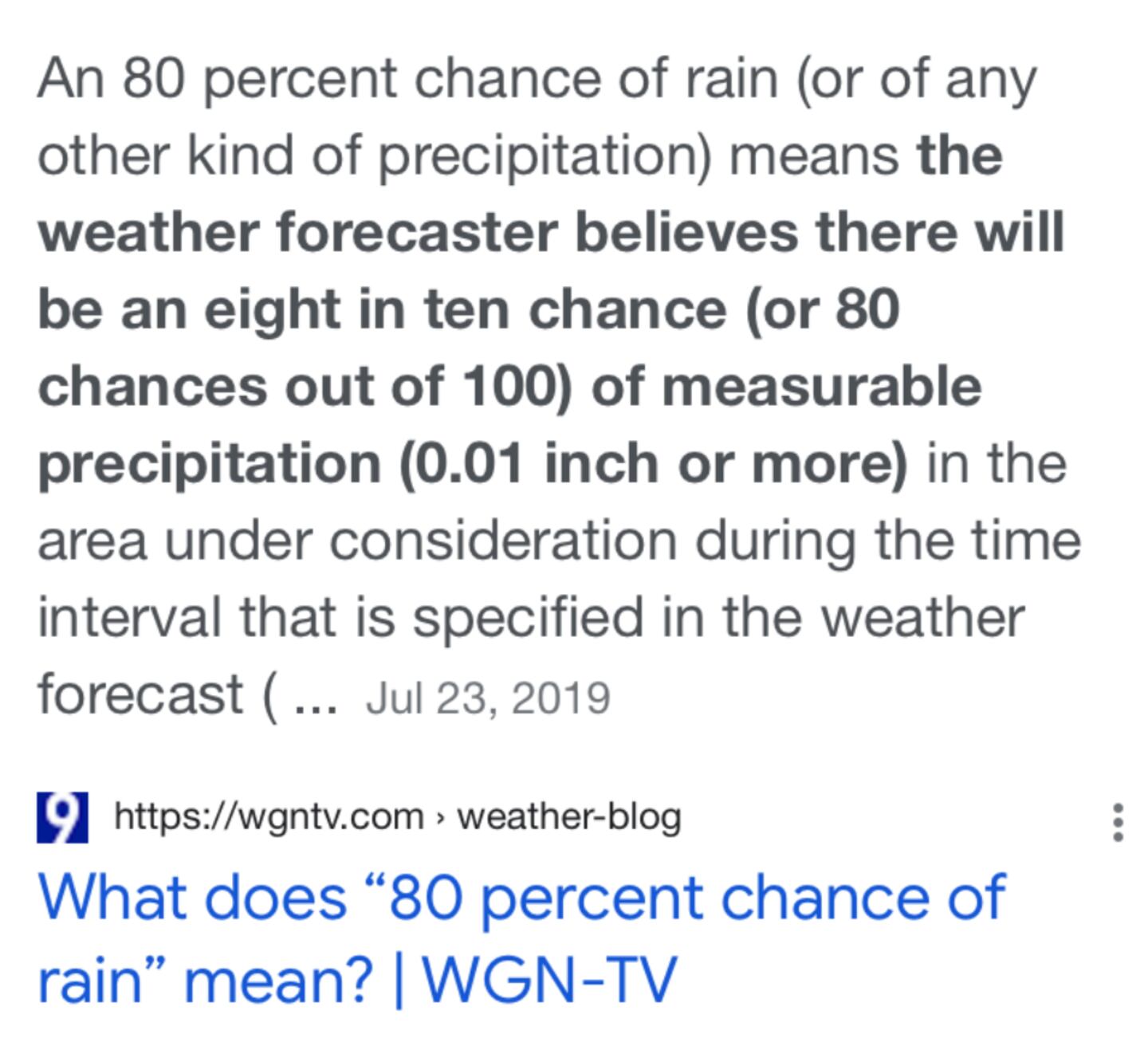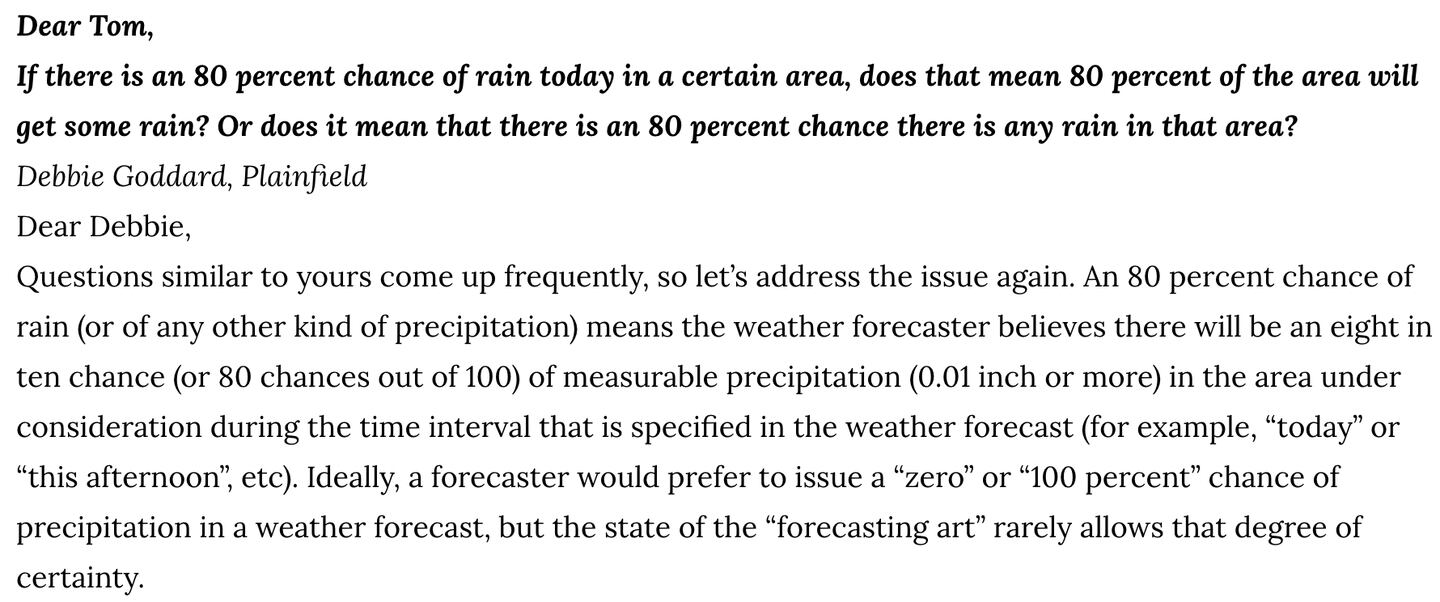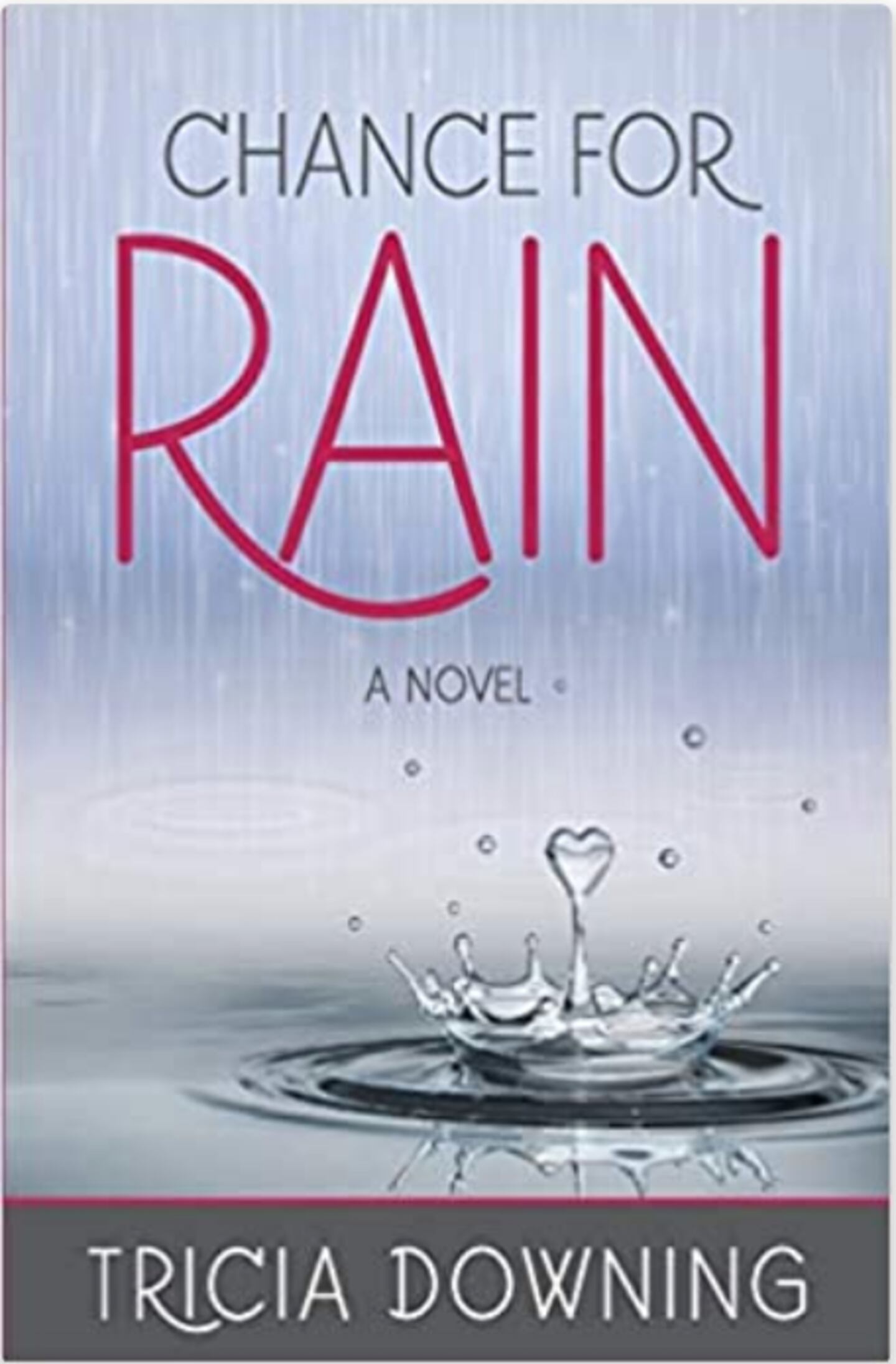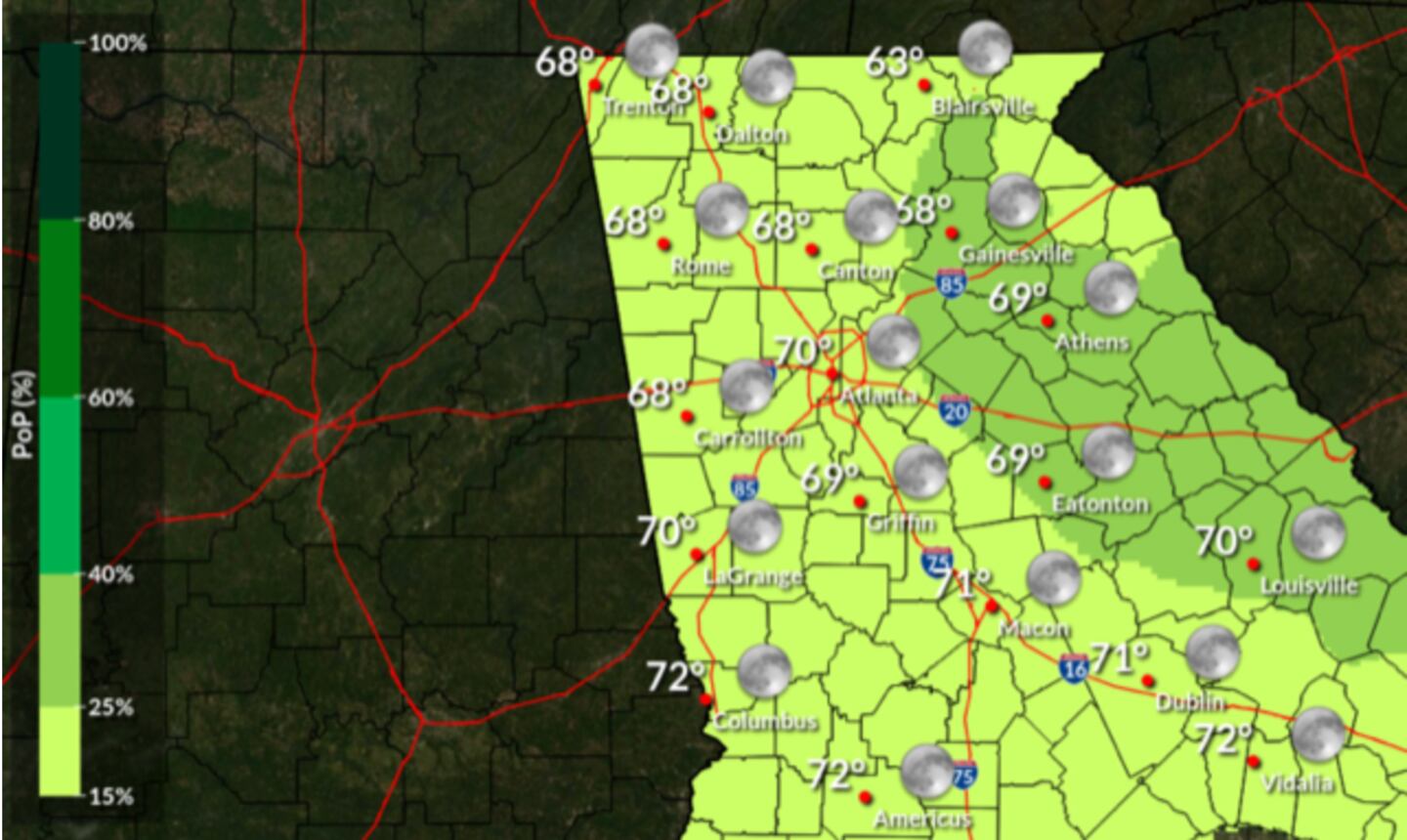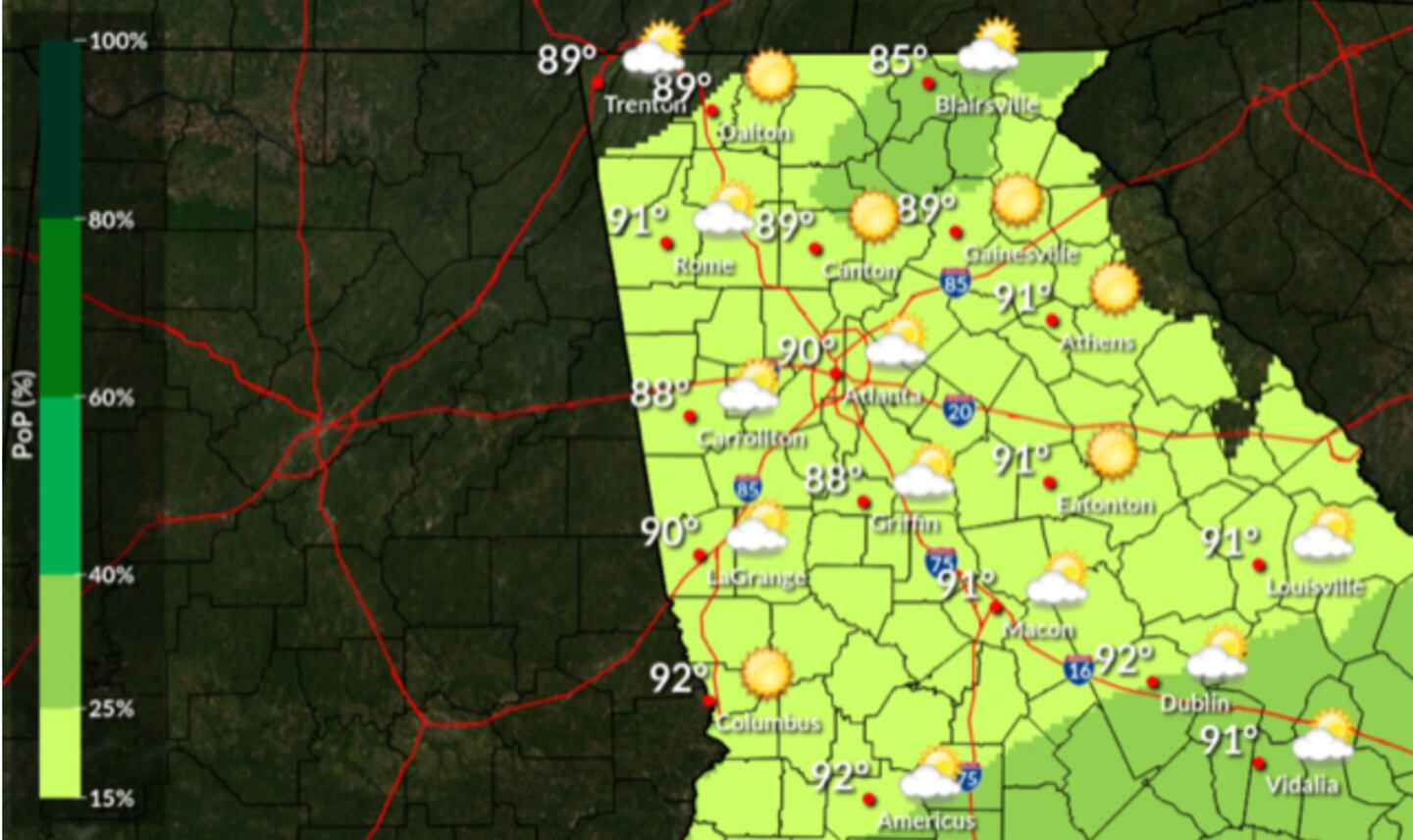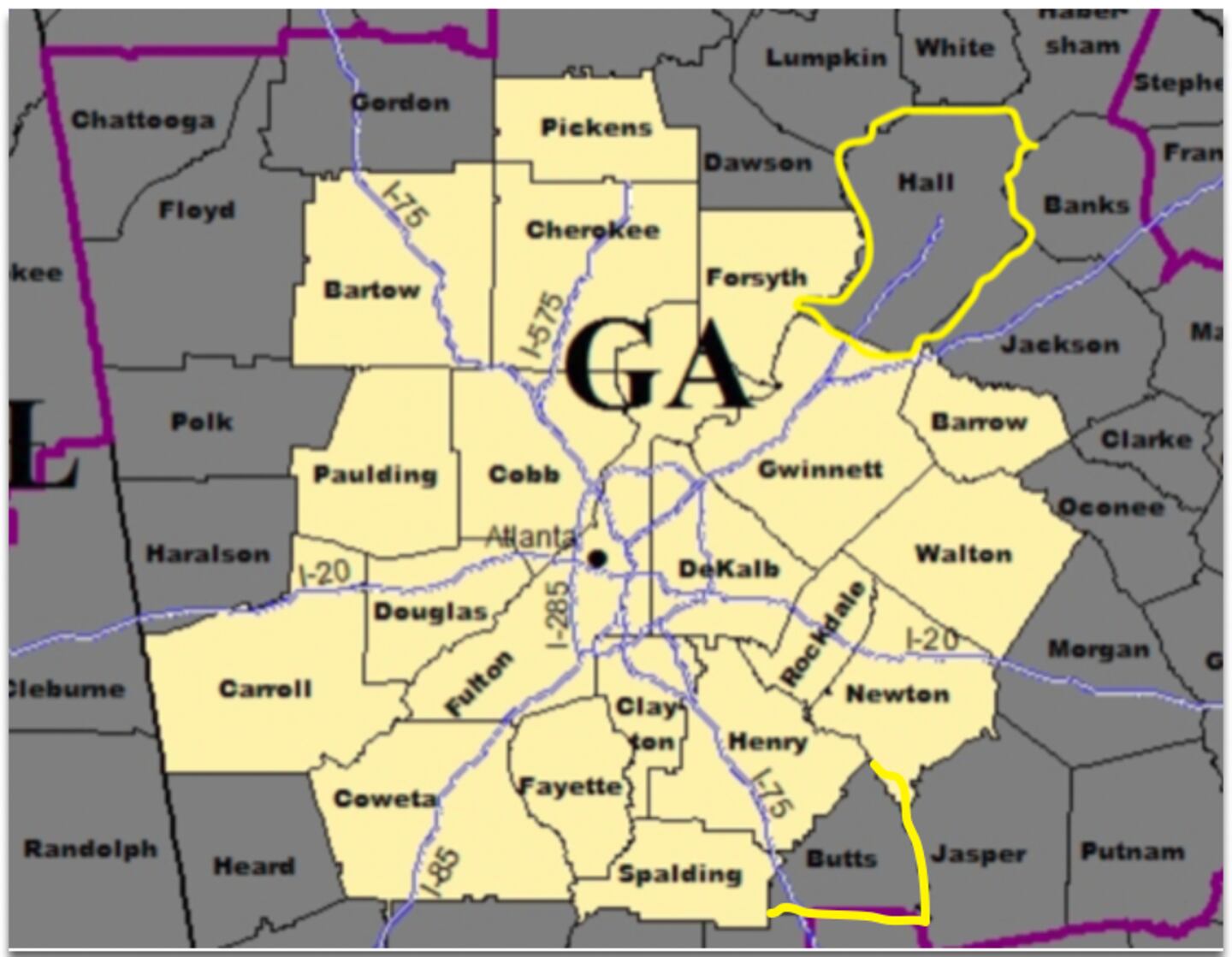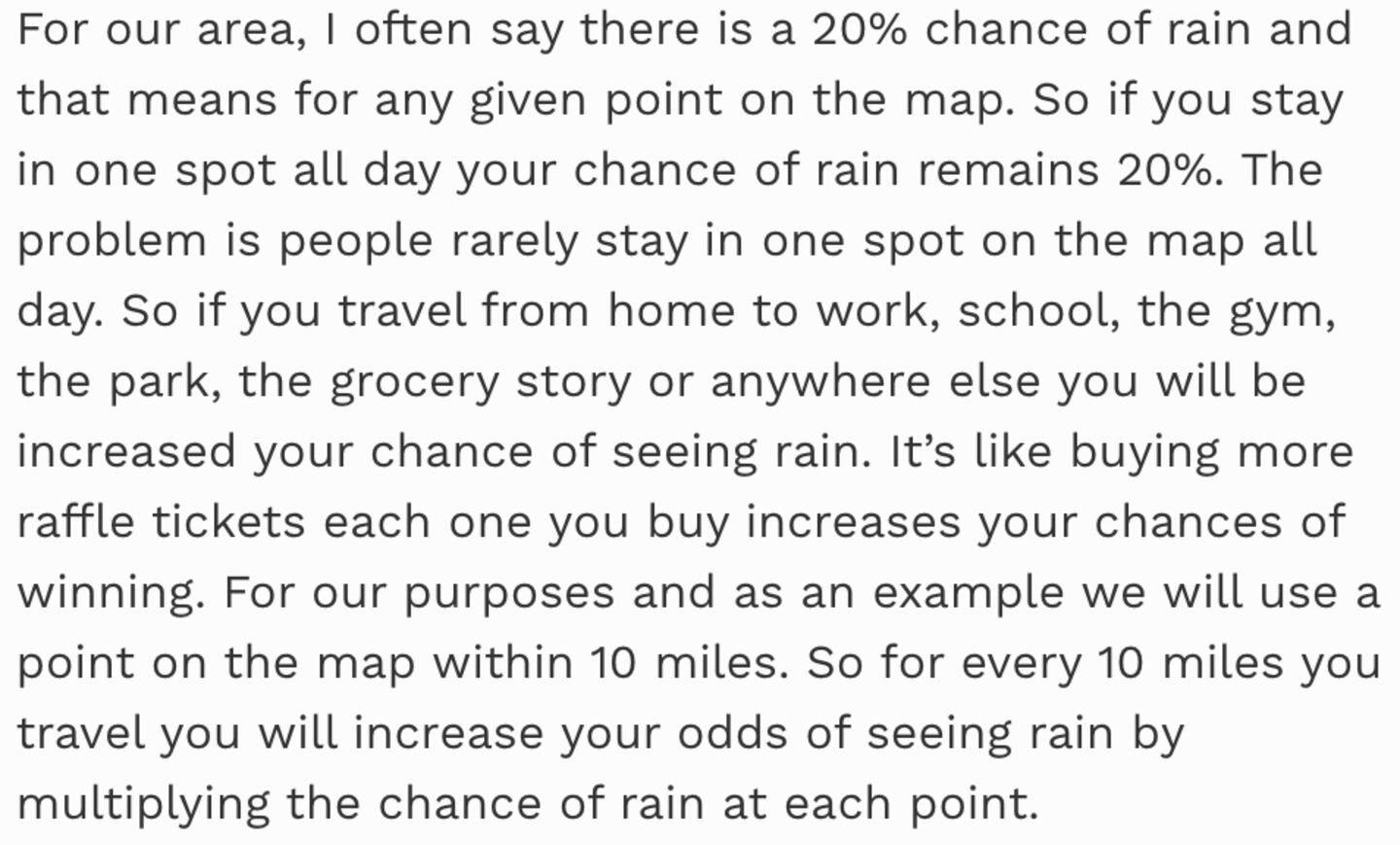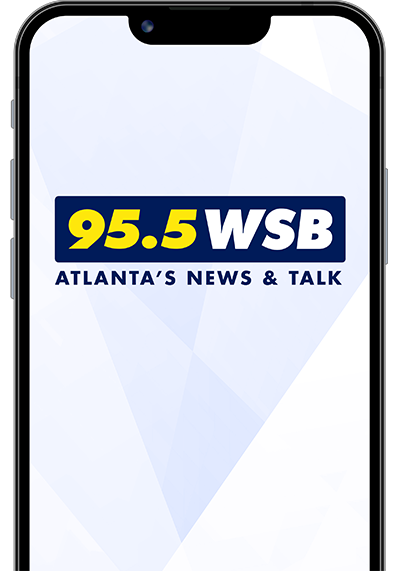I do not pretend to speak for all meteorologists. This is what I think and how I’ve used the “chance of” for over 4 decades, learning it first as a kid and having it reinforced in the classroom in college forecasting classes.
I think people OVER THINK this.
And getting the info from some rando on TikTok or Facebook is a waste of time.
Uncertainty is a normal part of life no matter how much we don’t like it. And in science things are rarely if ever 100% regarding the future. There is no point in issuing a forecast you have no confidence in, I issue the best forecast I can have confidence in... if I didn’t then I would issue a DIFFERENT forecast. I am always as confident as I can be in whatever I am forecasting. No prediction of the future can be 100% confident for obvious reasons. That is why if it will rain is not a yes/no question.
As Ben Franklin said: “The only thing certain in life is death and taxes”.
If you hear your favorite sports channel is giving your team only 3 out of 10 odds to win, I imagine you brace yourself for a loss. If they give your team 7 in 10 odds to win you probably fell pretty good about your teams chances. Setting aside your person feelings about your team that is, :)
Obviously not everyone takes a statistics or statistical analysis course in their schooling, and not everyone is interested in gambling. There can be complicated formulas but we do the math for you.
However, no advanced calculus is required to understand 7 is bigger than 3, 3 is smaller than 7 or 10 and that an 80% chance of something happening is a heck of a lot more certain than a 20% chance of something happening.
The “probability of precipitation” (POP) is hardly anything new so it’s not like we have’t had a lifetime to grasp it both from the many times it has been explained in print, on digital, on radio/TV and from experiencing it first-hand just by paying attention. So if someone doesn’t understand then they haven’t put in even a tiny effort or they don’t care.
Research has shown some forms of probability (or odds) were included in weather forecasts more than 200 years ago, and in more modern times 1900-1925. The predecessor to today’s “Weather Bureau” or National Weather Service was the U.S. Army Signal Service circa 1870 and they’ve long used probabilities.
Objective methods (meaning independent of forecaster) of producing probabilities date back to at least 1905.
Suffice to say that the needs of WWI and WWII and the advent of the computer age allowed great advancements in computing objective POP or odds over the last 98 years with the common “Chance of rain today...” having become standard in America sometime between the 1950s and 1970s.
Forecasters can subjectively come up with the number and numerical weather prediction (NWP) post-processing models produce objective numbers for the chance of precipitation. On any given day different computer models will and do differ on the percentage and so do individual forecasters. There is not just one possible forecast.
THE CHANCE OF PRECIPITATION does not tell you... how much precip will fall, how long it will last, when it will start or end, if it will be light or heavy, if dangerous weather is possible etc. BUT the METEOROLOGIST WILL TELL YOU THOSE THINGS as part of the weather report.
---------------------------------------------------------------------------------------------------------------------------------
NOAA/NWS/U.S. CHAMBER OF COMMERCE OFFICIAL:
PEACHTREE CITY NATIONAL WEATHER SERVICE FORECAST OFFICE FOR ATLANTA OFFICIAL:
OFFICIAL DEFINITION AMERICAN METEOROLOGICAL SOCIETY:
WGN TV CHICAGO:
“ASK” TOM SKILLING WGN TV/RADIO:
Is there not a 50/50 chance of precipitation every day? NO, no not at all. In fact you know from your own life there are many days when no precipitation is forecast and none occurs. Also, probabilities are by their very nature not yes/no, as any halfway decent middle or high school will teach us.
Author and scientist Bob Henson points out:
Perhaps some of you prefer fiction:
As an added way to clarify or emphasize the forecast, most forecasters use both the POP and a descriptive term either together or in parts of the forecast.
FOR EXAMPLE, I would say on the radio: “A mix of sun and clouds today, hazy hot and humid with a 30% chance of an isolated afternoon or evening thunderstorm, high 92″.
In Georgia in the summer thanks to the instability that comes from heat and humidity it is hard to get a zero chance of a thunderstorm and most people realize that.
I almost never bother to formally mention a chance of 20% or less as any shower or thunderstorm would be just “a stray one” or “a rogue one”. Which I might mention in passing.
STANDARD COMMON DESCRIPTORS I USE:
Slight chance/Stray or rogue... 20% or less
Few or isolated... 30%
Scattered... 40-60%
Numerous/Widespread/Likely... 70% and higher
Categorical... 90-100% I’d just say 90 or 100% likely or just say it’s gonna rain since the meaning of such a high POP is obvious
---------------------------------------------------------------------------------------------------------------------------------
As I said other details would be added to the forecast as needed, such as: morning or evening, heavy or light, flooding/severe, brief, periods of, occasional/on and off, intermittent, frequent... whatever the situation warrants.
Just remember the 95.5 WSB listening area covers more than just your house or office or mine, it covers 23 counties considered “Metro Atlanta”. When POSSIBLE we will divide up the “POPs” North to South or West to East as needed.
Such as “a 30% chance of an isolated thunderstorm far North Suburbs only a stray thunderstorm possible South of the Airport”.
EXAMPLES OF POP VARIATION BY LOCATION:
Our forecast coverage area in the map below covers more than just one location. Keep in mind that also means if you move or live outside our forecast area (yellow) the WSB forecast does not apply to you. Although weather does not stop and start at borders so there can be some overlap.
Meteorologist Brad Panovich in Charlotte makes a very KEY POINT on the subject I had not really thought of before but is very important to remember. I think we’ve all experienced this first-hand driving around Atlanta on any given day going from storm to sunshine and back again, only to get back home and be told by a neighbor it hasn’t rained a drop all day!
I personally have often gone to the grocery store a mere 3 blocks from home and the parking lot was soaked with rain and coming down hard but my subdivision was dry and partly sunny, then when finished shopping got back home and still bone dry. This spring I TWICE had it pouring rain in my backyard but not in front of my house!
Brad of WCNC TV wrote:
One last point. DO NOT be CONFUSED by observation vs. forecast. If it is dry where you are that does not mean there is a 0% chance of rain in the forecast, and if it is pouring that does not mean the forecast should be 100% chance of rain. Because opening your eyes and seeing the weather is an OBSERVATION. It is the present weather condition. There’s a good reason we don’t say on the news “And now time for the weather present”. No, it’s weather FORE-cast... fore as in the future, BEYOND what we can know by looking out the window. Describing what we see requires zero skill.
PROTIP: I personally ALMOST never cancel my outdoor plans for anything less than 70%.
For more follow me on Twitter @MellishMeterWSB.
©2021 Cox Media Group


